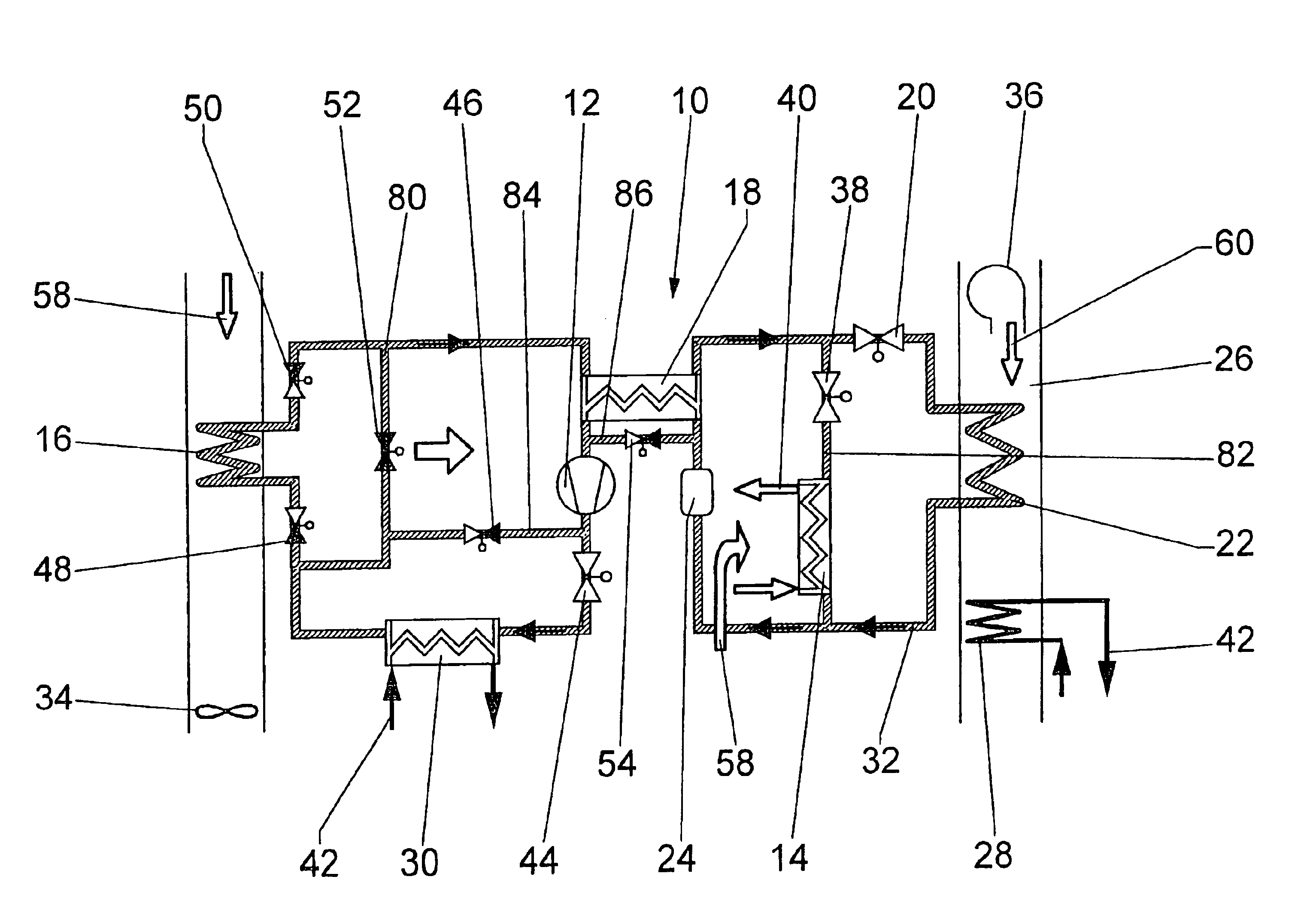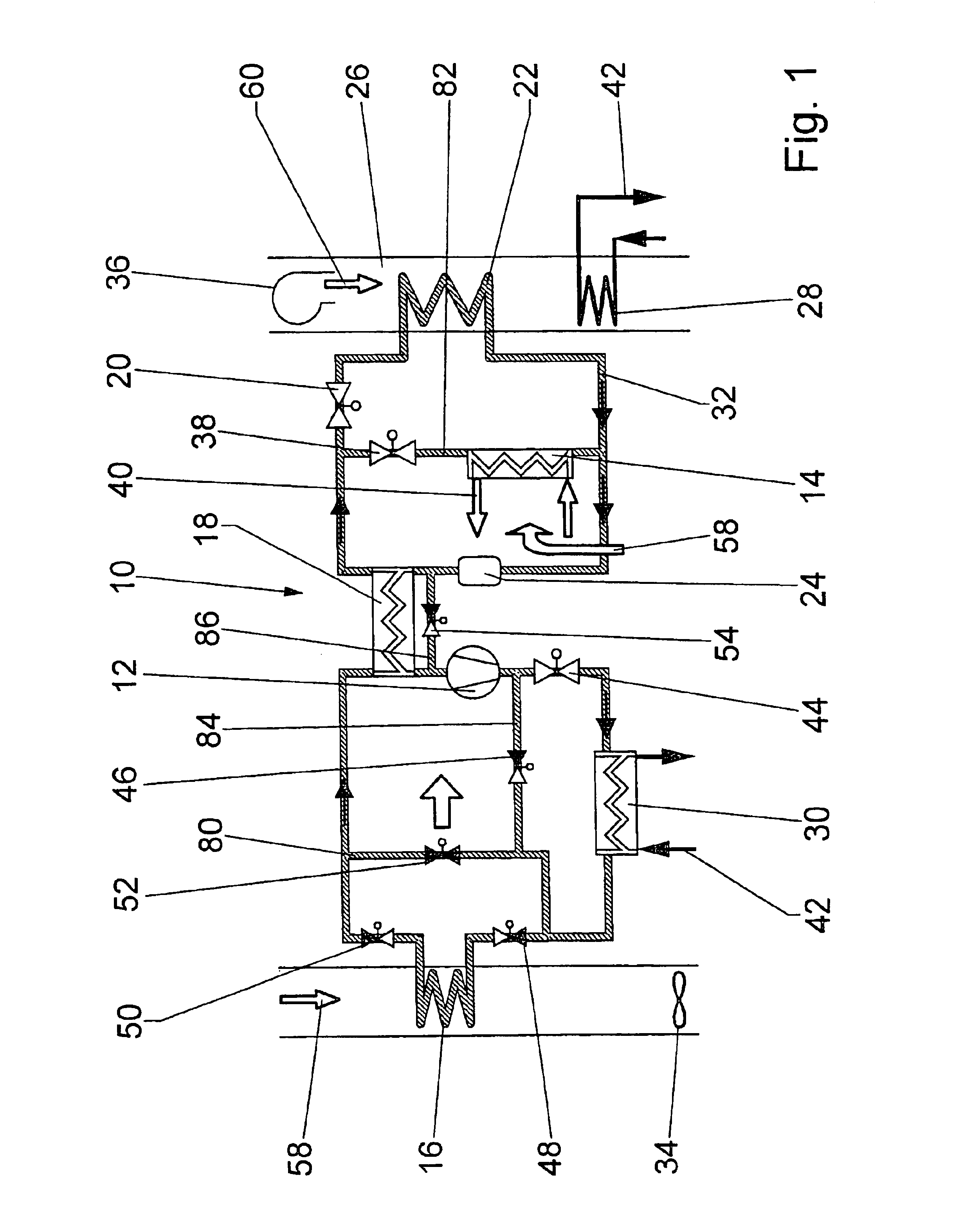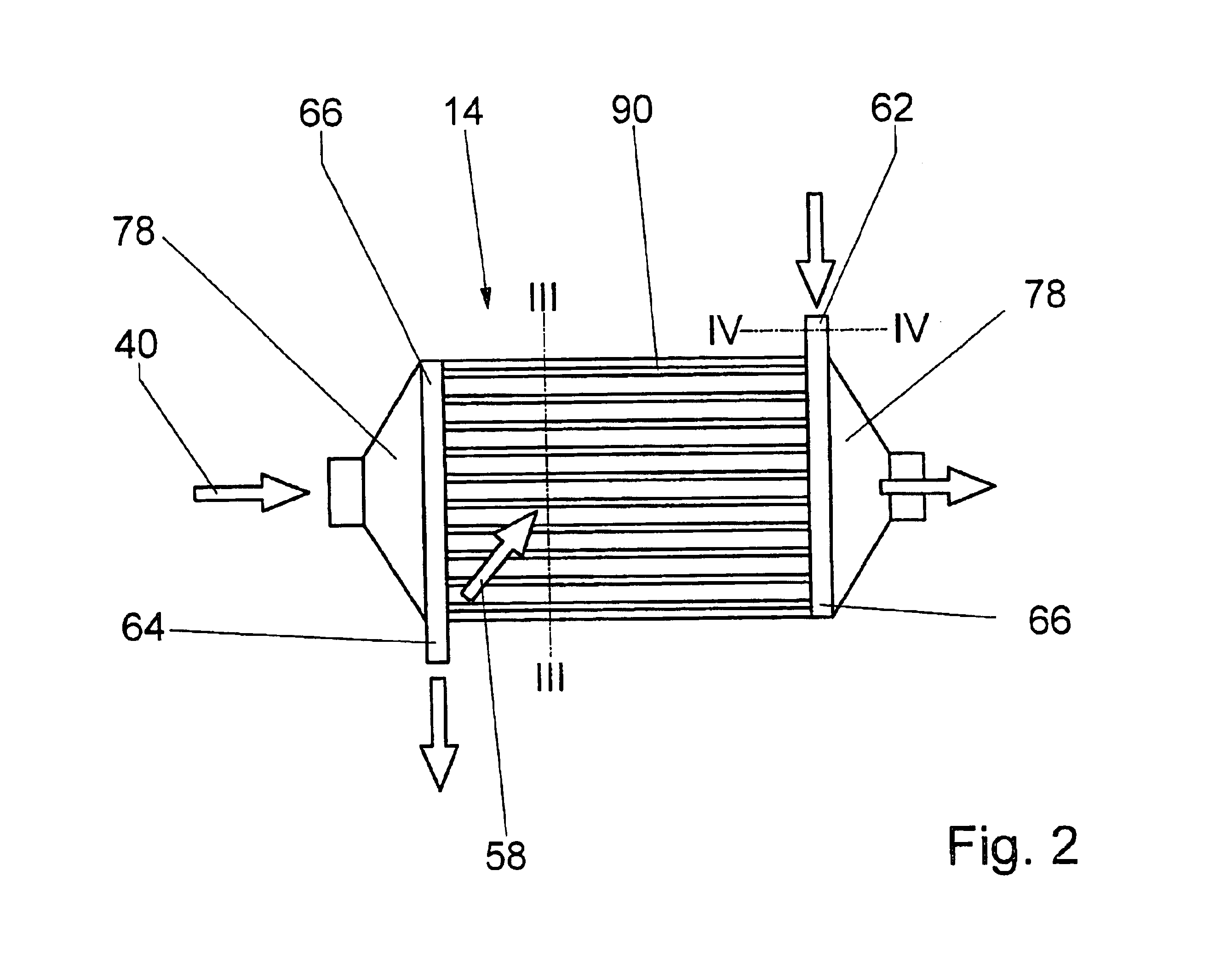Air-conditioning unit with additional heat transfer unit in the refrigerant circuit
a technology of air-conditioning unit and refrigerant circuit, which is applied in the direction of machine operation, light and heating apparatus, transportation and packaging, etc., can solve the problems of spontaneous high heat output, low heat output, and insufficient heat output of coolant, so as to increase the amount of heat passed and quickly warm the internal combustion engine. , the effect of not affecting the performance of the internal combustion engin
- Summary
- Abstract
- Description
- Claims
- Application Information
AI Technical Summary
Benefits of technology
Problems solved by technology
Method used
Image
Examples
Embodiment Construction
[0025]An air-conditioning unit 10 comprises a refrigerant line 32 in which a refrigerant, preferably carbon dioxide, circulates, and forms a closed refrigerant circuit. The course of flow of the refrigerant is indicated by arrows (FIG. 1). At low temperatures, the air-conditioning unit 10 is used as a heat pump by running it in a “heating operation”.
[0026]To heat the motor vehicle, a fan 36 draws in air 60 as fresh air from the environment or as recirculated air from the passenger compartment. Said air is pumped through an air-conditioning device 26 with an evaporator 22. The air 60 is dehumidified. A heating heat transfer unit 28 located downstream warms the air 60 to the desired temperature. The heating heat transfer unit 28 is connected to a coolant circuit 42 with a circulating coolant. In some operating ranges of the internal combustion engine in which the heat from the coolant is not sufficient to heat the passenger compartment, e.g., during the starting phase of the internal ...
PUM
 Login to View More
Login to View More Abstract
Description
Claims
Application Information
 Login to View More
Login to View More - R&D
- Intellectual Property
- Life Sciences
- Materials
- Tech Scout
- Unparalleled Data Quality
- Higher Quality Content
- 60% Fewer Hallucinations
Browse by: Latest US Patents, China's latest patents, Technical Efficacy Thesaurus, Application Domain, Technology Topic, Popular Technical Reports.
© 2025 PatSnap. All rights reserved.Legal|Privacy policy|Modern Slavery Act Transparency Statement|Sitemap|About US| Contact US: help@patsnap.com



